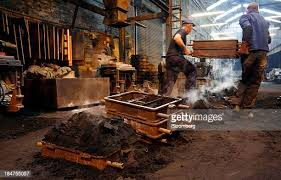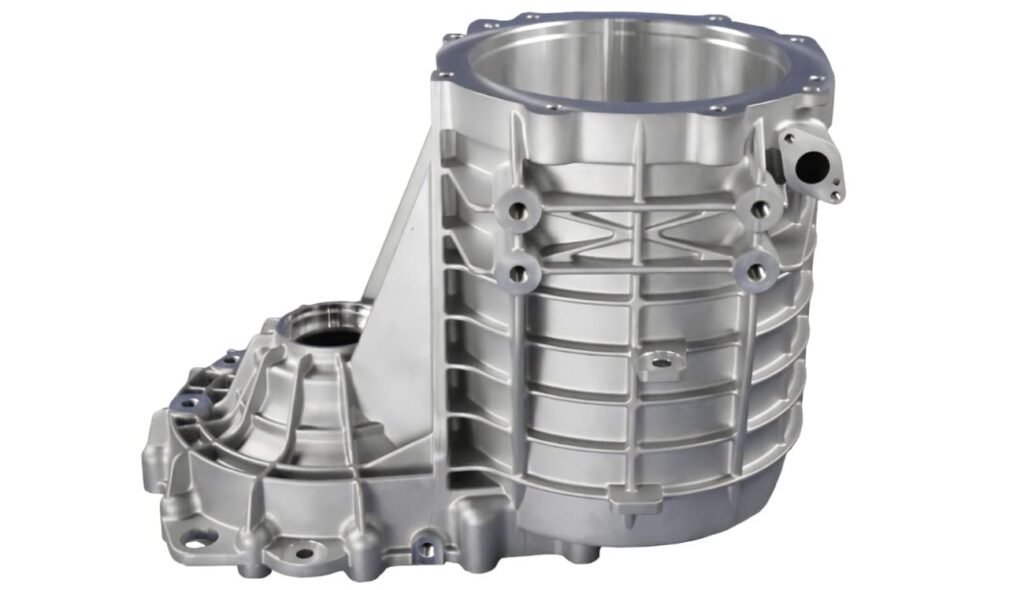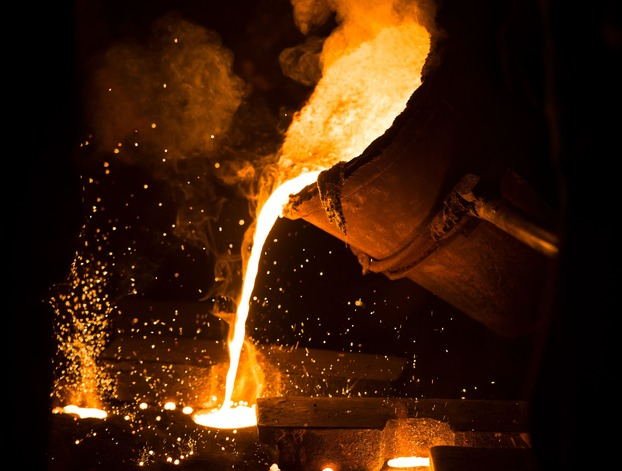Introduction
Sand casting is a common metal casting process and it has been in use for over 1000 years. This process uses sand to create various complex mold shapes.
About 60% of all metal casts are made with sand casting. In this article, we would discuss sand casting, the sand casting process, how it works, and the materials used during the process.
What is sand casting?
Sand casting, also known as sand molded casting, is one of the most versatile and widely used casting methods.
It involves pouring molten metal with pressure into an expendable sand mixing chamber. The molten metal would solidify in the sand mixing chamber to form the shape of the chamber.

Advantages of Sand casting
Sand is inexpensive and can withstand high temperatures. This makes sand casting suitable for casting metals with high melting points (like titanium, nickel, steel etc).
Also, sand casting has high tolerance capabilities and can be used to produce intricate parts. The sand casting process is appropriate for small batches of finely shaped castings,
You can produce cast parts of various shapes and sizes with sand castings. These include automobile parts, oil tanks, hardware, electronic equipment, engine blocks, cylinder heads, many valves and pistons, blowers, etc.

The oldest known sand casting process dates back to before 1000 B.C. Clay moulds have been used for various castings during the Shang Dynasty in the 16th century.
In fact, the famous Houmuwu ding (circa 1300 BC) was created using clay moldings.
Hostory of sand casting
The first experiment of sand casting began in 1915 with bentonite clay (a binder in a foundry).
This clay plays a greatly important role in increasing the green sand casting and dry strength.
The process of sand casting is highly adaptable and capable of dealing with mass production.
Also, the first fully automated company for producing hand grenades for the United States Army began operations in 1918.
This means that sand casting has been in use by the armies to make grenades since the 20th century.

Process of sand casting
Firstly, the material is heated to the correct melting temperature and sometimes treated to modify the chemical composition to achieve the required material properties during the sand casting process.
The molten metal is then poured into a mold with the desired shape cavity to cool and solidify. The steps for casting in sand moulded are as follows;
Step 1: Prepare the sand mold and place a mold pattern in it.
The mold pattern is placed in the sand as the first step in sand casting. As the size and shape of the casting are directly affected by the mould,
manufacturers create different molds to manufacture metal products and components of different sizes and shapes.

Step 2: Set up the sand gating system
Sand casting, like most other casting processes, makes use of a gating system.
It is used to funnel the molten mold into the mold cavity and consists of a pouring cup and tunnels or “gates”.
Step 3: Remove the Sand Mold Pattern
The mold pattern is no longer relevant once the gating system is completed.
When a mold pattern is placed inside the sand, the sand takes on the shape of the mold. As a result, the moud pattern is no longer necessary, hence it is removed.
Step 4: Fill up the mold cavity with liquid or molten metal
Wait until the metal or alloy has melted and become liquid. Thereafter, pour it into the mold cavity.
Step 5: Allow the molten metal to Cool in atmospheric temperature conditions
Wait for the molten metal to cool after it has been poured into the mold cavity.
Again, different metals take different amounts of time to cool. As the molten metal cools, it will transition from a liquid to a solid state.
Step 6: Break Open the sand Mold to Remove the Metal Casting
Breaking the mold to remove the newly created metal casting is the sixth step in sand casting.
For large components with thick cross sections, sand molding is ideal. Using relatively inexpensive wood patterns, this process is capable of producing fairly complex shapes.

The material used for sand casting
A sand casting mold is made up of four main components: a binder, additives, base sand, and a parting compound.
Binders are used to bind the sand particles together in base sand. It acts as the adhesive that holds the mold together.
Here are some examples:
● A clay and water mixture. The most common clays are bentonite and kaolinite.
● Linseed oil, vegetable oils, and marine oils are examples of oils.
● Natural or synthetic high melting point gums are used as resin binders. Urea-formaldehyde (UF) and phenol formaldehyde (PF) resins are the most common.

Additives enhance the surface finish, dry strength, refractoriness, and “cushioning properties’ of molding components.
Base sand is used to create the mold or core without the addition of any binder. Silica sand, Olivine sand, Chromite sand, Zircon sand, and Charmotte sand are examples of base sand.
Parting compounds (liquid or fine powder form). Before casting, a parting compound is applied to the pattern to facilitate easy removal. Talc,

graphite, and dry silica are common powders; mineral oil and water-based silicon solutions are common liquids.
Conclusion
This article is a general overview of sand casting and the casting process, including how it works and the materials used in sand casting. This knowledge will help you to better understand and appreciate sand casting.








